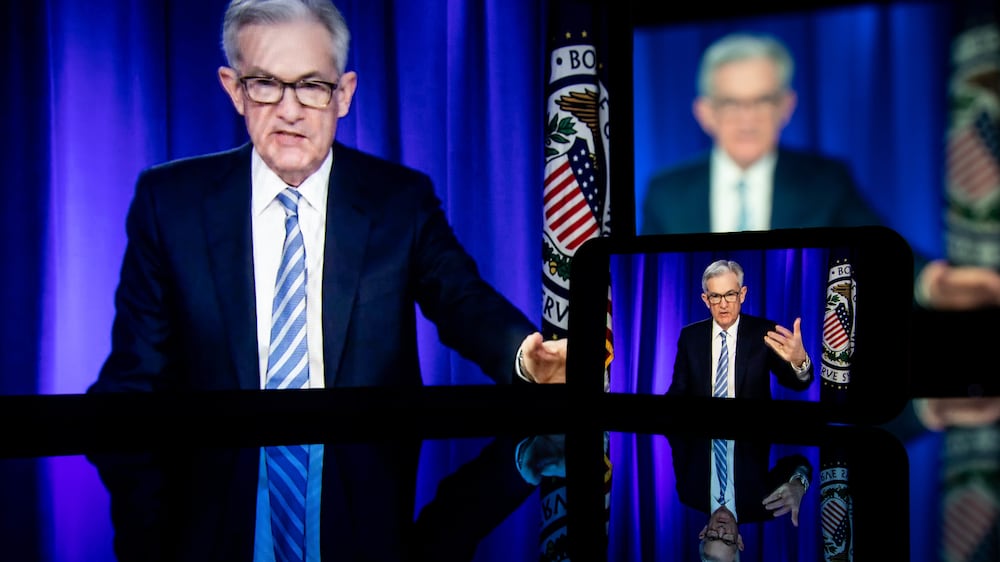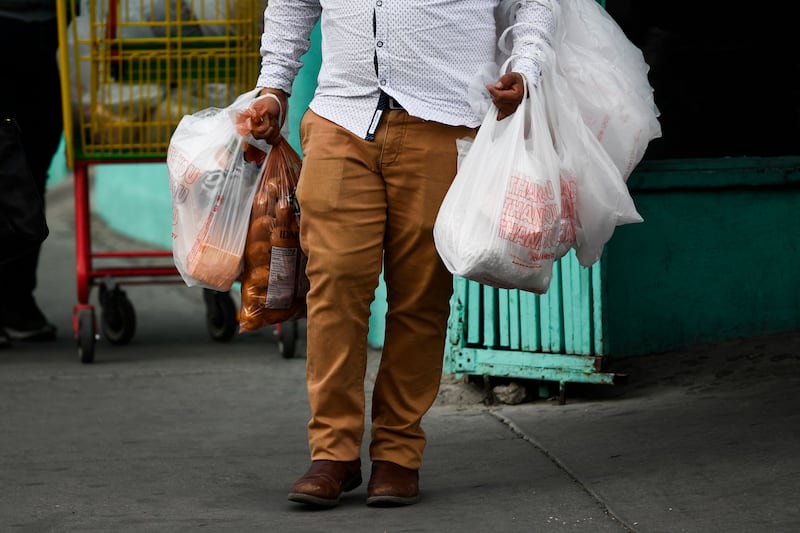US consumer spending fell in December, suggesting the economy lost speed heading into the new year amid snarled supply chains and raging Covid-19 infections, while annual inflation increased at a pace last seen nearly 40 years ago.
Wage inflation is also building up amid an acute shortage of workers. Private wages rose strongly in the fourth quarter, posting their largest annual gain since the mid-1980s, other data showed on Friday.
Mounting inflation pressures could force the Federal Reserve to aggressively increase interest rates, stifling growth, economists warned.
“No one wants to go back to the '80s, but the economy is. Can stagflation from an overly aggressive Fed be next?” said Christopher Rupkey, chief economist at FWDBONDS in New York. “The Fed let its guard down and now they risk it all by saying they might have to move faster and higher on interest rates.”
Consumer spending, which accounts for more than two thirds of US economic activity, dropped 0.6 per cent last month after gaining 0.4 per cent in November, the Commerce Department said. Economists polled by Reuters had forecast consumer spending declining 0.6 per cent.
The data was included in the advance gross domestic product report for the fourth quarter published on Thursday. The economy grew at a 6.9 per cent annualised rate last quarter, accelerating from the July-September quarter's 2.3 per cent pace.
That boosted growth in 2021 to 5.7 per cent, the strongest since 1984. The economy contracted 3.4 per cent in 2020.
Consumer spending dropped in December likely as the result of Americans starting their holiday shopping in October for fear of empty shelves at stores because of rampant shortages of goods, including motor vehicles.
Skyrocketing coronavirus infections driven by the Omicron variant also reduced traffic to places like restaurants and bars, as well as other high-contact venues.
The shortages owing to overstretched supply chains kept inflation elevated last month. The personal consumption expenditures (PCE) price index increased 0.4 per cent after rising 0.6 per cent in November. In the 12 months through December, the PCE price index increased 5.8 per cent. That was the largest advance since 1982 and followed a 5.7 per cent year-on-year increase in November.
Inflation is running way above the Fed's flexible 2 per cent target.
The Fed on Wednesday said it was likely to raise interest rates in March.
Fed expects interest rate increases in 2022

Signs that inflation could remain elevated for a while were reinforced by a separate report from the Labour Department on Friday showing the Employment Cost Index, the broadest measure of labour costs, rose 1.0 per cent in the fourth quarter after increasing 1.3 per cent in the July-September period.
Labour costs surged 4.0 per cent on a year-on-year basis, the largest rise since 2001, after increasing 3.7 per cent in the third quarter.
The ECI is widely viewed by policymakers and economists as one of the better measures of labour market slack and a predictor of core inflation as it adjusts for composition and job quality changes. Economists had forecast the ECI advancing 1.2 per cent in the fourth quarter.
The labour market is viewed as being at or near maximum employment. There were 10.6 million job openings at the end of November.
Wages and salaries rose 1.1 per cent last quarter after increasing 1.5 per cent in the third quarter. They were up 4.5 per cent year-on-year. Private industry wages rose 1.2 per cent and shot up 5.0 per cent year-on-year, the most since the mid-1980s. Benefits for all workers rose 0.9 per cent after a similar gain in the July-September quarter.
But high inflation is cutting into wage gains, eroding consumers' purchasing power. The report from the Commerce Department showed consumer spending adjusted for inflation dropped 1.0 per cent in December after slipping 0.2 per cent in November.
Americans grapple with the highest inflation in decades







